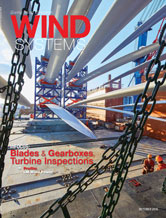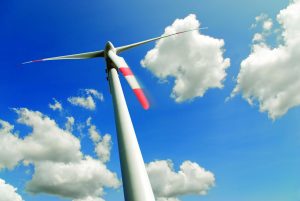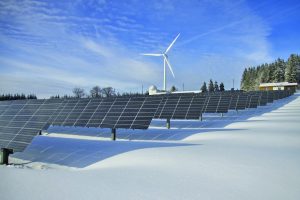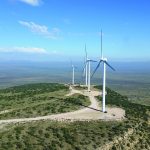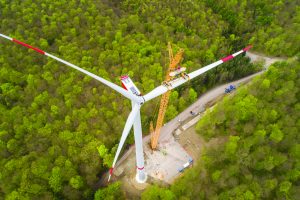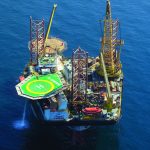A carbon-fiber blade from a wind turbine is transformed into shards of debris as it is struck by 30,000-degree lightning.
This disastrous — and costly — scenario is not an uncommon sight for wind-farm operators. But not all lightning damage is so obvious.
After a storm, those tasked with managing and maintaining wind turbines have a challenge: Does each turbine necessitate manual, costly, and time-consuming inspection for lightning damage? Or do wind-farm operators take the risk of operating a damaged turbine, potentially leading to greater issues?
Lightning, the leading cause of turbine-blade damage and unplanned turbine outages, is the greatest operational hazard affecting the fastest-growing source of energy in the world. And, these damages are not easily repaired. Energy companies spend millions in short- and long-term repair, replacement, and upgrades.
Wind farms, though an effective and clean source of energy, possess properties that make them vulnerable to lightning. Beyond the fact they are giant spires often in the middle of a flat field, turbines are constructed from insulating materials.
This predicament poses a particular challenge for wind-farm operators. A turbine struck by lightning can sustain critical damage, but the damage may be imperceptible to the naked eye. Even the use of strike-tracking technology to observe a lightning-producing storm is minimally helpful to those developing the following day’s maintenance plan.
However, modern advances in weather technology have brought about more precise weather detections for wind-farm operators. After-action reports analyze the likelihood that turbines within a designated radius were struck by lightning, allowing wind-farm operators to better assess potential damage following a storm and conduct more efficient inspection and repair plans.
When Lightning Strikes
Unrepaired damage to turbine machinery can intensify exponentially. Extensive stress is placed on the blades when operated. When a turbine is impaired without notice — often puncture-related — what may begin as a minuscule crack or fracture that can be easily fixed with minimum cost can expand into a massive and costly fix.
However, economic cost of repair is not the only consequence. Turbines kept from spinning due to lengthy periods looking for potential damage can reduce energy output. Loss of power generation can be avoided with more accurate damage assessments that translate into faster maintenance and repairs.
More efficient and effective assessments are constructed through GIS-mapped asset overlays with highly accurate lightning tracking data. The combination of lightning strike data and specific asset location enables accurate evaluations of potential damage.

Working for Wind Farms
A catalog of every wind turbine and its specific location within a wind farm is listed. After a storm, this list of turbine coordinates is compared to the recorded latitude-longitude of the lightning strikes.
Operators are notified of the exact location lightning struck in proximity to a turbine, polarity (positive or negative) of the strike, and the intensity of the lightning when it crosses a certain locational threshold.
A new report is produced every 24 hours giving operators the ability to assess and prioritize a turbine-inspection-and-maintenance schedule for the day.
Value of Lightning Data
While real-time lightning is tracked and reported, the data from the report is archived and available long after the lightning activity is over. That means wind farmers can study every lightning strike on their property from the day they sign up for the service. This feature helps wind farms track lightning activity near a turbine or to see specific locations in the wind farm which might be susceptible to lightning strikes. This archived information also is useful to identify patterns of lightning activity that might be useful when looking for locations to install new turbines to extend a wind farm.
Looking Ahead
Wind-farm operators are not the sole beneficiaries of this asset-specific lightning threat assessment. The entire utility industry can take advantage of weather system services to create safer, faster, and more efficient response efforts to threat assessments of assets.
And, with the recent launch of Hub Height Winds forecasting capabilities, the energy industry will be able to identify potential risks of high wind speeds and wind gusts, as well as the impact they may have on assets.
The energy industry can now use predictive intelligence to plan ahead and improve reliability and decrease costs down the road. With increasing weather volatility and pressure on asset-management budgets, this capability is critical for understanding weather’s impact on assets and how best to manage them.
















